Dedicated to advancing scholarly and public understanding of the past, present, and future of western North America, the Center supports research, teaching, and reporting about western land and life in the United States, Canada, and Mexico.
Diseños, Penitencia Creek and the Coyote Creek Watershed

By Maika Nicholson
M.S. Civil and Environmental Engineering, 2012
 The San Francisco Estuary Institute’s (SFEI) Historical Ecology (HE) Program seeks to learn how habitats were distributed and ecological functions were maintained within the native California landscape. By understanding how streams, wetlands, and woodlands were organized along physical gradients, a primary aim of the HE Program is to help scientists and managers develop new strategies for more integrated and functional landscape management.
The San Francisco Estuary Institute’s (SFEI) Historical Ecology (HE) Program seeks to learn how habitats were distributed and ecological functions were maintained within the native California landscape. By understanding how streams, wetlands, and woodlands were organized along physical gradients, a primary aim of the HE Program is to help scientists and managers develop new strategies for more integrated and functional landscape management.
I’m just finishing up my fourth week at SFEI-- another enjoyable day, leafing through the piles of historical maps and texts. Penitencia Creek is located within the Coyote Creek Watershed , on the east side of the Santa Clara Valley near Milpitas. I’m searching for clues about the drainage patterns and habitats that characterized Arroyo la Penitencia, prior to modification in the mid-19th Century. The creek provides significant potential for stream restoration and anadromous fish recover, and the aim of this study is to fill knowledge gaps and inform a number of ongoing and planned environmental restoration and management efforts for the watershed.
Touring the "River of a Million Horsepower"
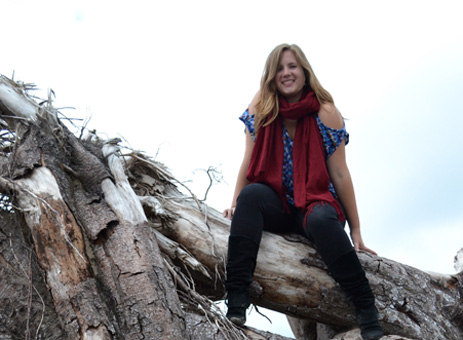
By Emily Pollock
B.A. Candidate in Anthropology, 2013
 Seattle City Light was voted into existence in 1911 by Seattle citizens as a way for the City of Seattle to compete with private companies for control and production of hydroelectric power. The department quickly established itself as a strong national symbol of municipal power and the Skagit River Hydroelectric Project in the North Cascades was main attraction. Tourism has always been a large part of this operation, but since 9/11 the public hasn’t been allowed inside the powerhouses and a few years ago the tours were retracted entirely due to budget deficits.
Seattle City Light was voted into existence in 1911 by Seattle citizens as a way for the City of Seattle to compete with private companies for control and production of hydroelectric power. The department quickly established itself as a strong national symbol of municipal power and the Skagit River Hydroelectric Project in the North Cascades was main attraction. Tourism has always been a large part of this operation, but since 9/11 the public hasn’t been allowed inside the powerhouses and a few years ago the tours were retracted entirely due to budget deficits.
My job this summer is to create a new tour, one that will take visitors all the way from the company town of Newhalem to the magnificent Ross Dam, the third and highest Dam in the Project. The tours will not only focus on the history of the Skagit Project, but on the ecology and geology of the area, Seattle City Light’s commitment to the environment and fish populations, and the production of power on the “river of a million horsepower.” I have been busy sifting through historical records, meeting with ecologists, fisheries experts, archaeologists and engineers, as well as taking trips up to the Project itself! I spent a few days up in Newhalem (the Skagit company town) this week working out some logistical kinks of my tour- but the highlight was getting to observe the lighting experts trying to re-create the historical nighttime up-lighting of Ladder Creek Falls nestled behind Gorge powerhouse- and it was simply breathtaking. It’s juxtapositions of nature and human engineering like this that make this project to fun and worthwhile to work on- a daily reminder that some of our greatest innovations can not only harness Mother Nature to our benefit, but can also protect and celebrate it.
Read more at the Out West Blog for Summer Interns »
A Slight Wolf Skull Emergency in Yellowstone
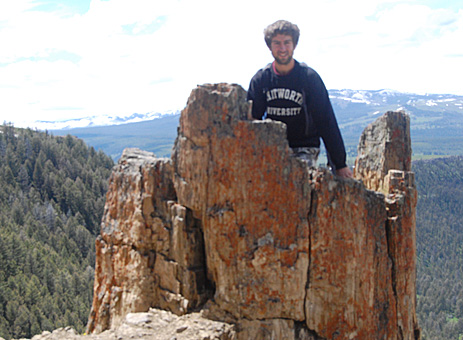
By Chris Rurik
B.A. English, minor in Geological and Environmental Science, 2011
 The other day, we had a slight emergency in the Yellowstone National Park museum collections. While doing an inventory of the prized wolf skull collection, my fellow intern and I noticed some web-like material in the crevices of a few of the skulls. A small infestation, possibly spiders – bad news in a facility that exists so that the collection’s hundreds of thousands of objects won’t be exposed to damage from humidity, light, or insects.
The other day, we had a slight emergency in the Yellowstone National Park museum collections. While doing an inventory of the prized wolf skull collection, my fellow intern and I noticed some web-like material in the crevices of a few of the skulls. A small infestation, possibly spiders – bad news in a facility that exists so that the collection’s hundreds of thousands of objects won’t be exposed to damage from humidity, light, or insects.
As quitting time (on the last day of the week, no less) came and went, we frantically sealed almost a hundred skulls and boxes of “post-cranial material” into airtight bags and wheeled the whole collection into a walk-in freezer. The freeze-thaw-freeze-vacuum procedure for eliminating the infestation is ongoing.
Can Grazing Cattle Help America's Bees?
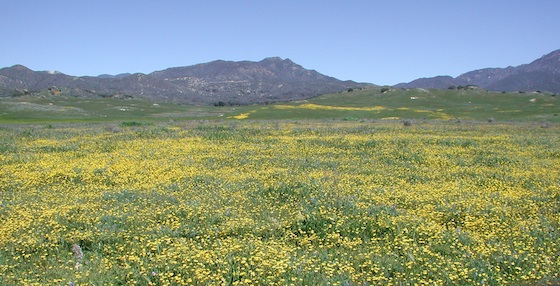
Photograph by Anita Gould via Flickr
After attending the Uncommon Dialogue on Rangelands organized by the Center and the Woods Institute for the Environment in May, the livestock rancher and environmental lawyer Nicolette Hahn Niman was moved to write this post for the Atlantic Monthly:
Here on our ranch, the yard and gardens are now humming with so many busy bees that if I let our two-year-old go barefoot outside, I'd probably get arrested for child endangerment. Meanwhile, a suburban woman recently complained to me that she hadn't seen a single bee in her garden this year. This contrast would make perfect sense to scientists at the University of California - Berkeley, who've just released a study showing that grazing lands provide critical habitats for wild bees and other pollinators.
– "A Way to Save America's Bees: Buy Free-Range Beef" by Nicolette Hahn Niman
Report Digs Up Best Groundwater Practices
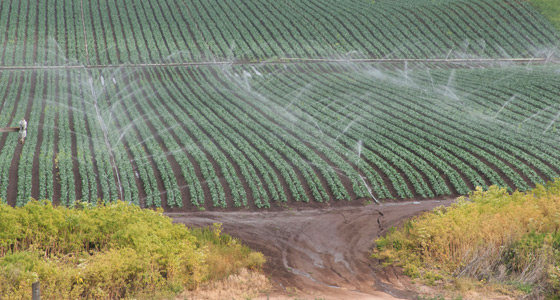
Photograph: United States Department of Agriculture
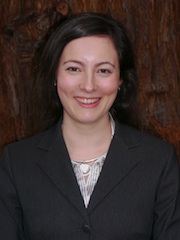 It's no secret that California's water management is highly fragmented and localized, especially the 30 percent of the state's water that is pumped from the ground each year. But according to a new study by Center researcher Rebecca Nelson and the Water in the West project, some local water districts are developing enlightened practices to promote sustainable management of their groundwater.
It's no secret that California's water management is highly fragmented and localized, especially the 30 percent of the state's water that is pumped from the ground each year. But according to a new study by Center researcher Rebecca Nelson and the Water in the West project, some local water districts are developing enlightened practices to promote sustainable management of their groundwater.
Nelson and her fellow researchers at the Center and the Woods Institute for the Environment have published their findings in a new report entitled "Uncommon Innovation: Developments in Groundwater Management Planning in California." "The homegrown innovations uncovered by this report point the way forward for local agencies to better manage groundwater in California," Nelson told the Stanford News Service, "and the way towards an updated and improved state policy structure to encourage them to do so."
Watch “Myths About the Transcontinentals”
In June, the Center's faculty co-directors Richard White and David M. Kennedy sat for a thought-provoking conversation about the transcontinental railroad – and the tycoons who built it – at the Commonwealth Club of San Francisco.
The complete video of the event is now online at the Club's website and on YouTube:
Prof. White also appeared in an interview on NPR's Morning Edition today, which is available online.
Mapping Journalism’s Journey West
We've just published a data visualization of three centuries of American newspapers on the Center's Rural West Initiative site. Showing how newspapers followed the great expansion West in the 19th and 20th Centuries, the visualization uses over a hundred thousand listings of US newspapers culled from the Library of Congress' database.
The map was co-produced with the Center's Research Assistants Dan Chang, Yuankai Ge, Yinfeng Qin and Jason Wang, and 2009-2010 Knight Journalism Fellow Krissy Clark, now at KQED public media. Thanks for all your help!
A version of the visualization is also available on High Country News, along with a news article by the Center about the resilience of rural newspapers.
Californians Collaboratively Explore Reform Options
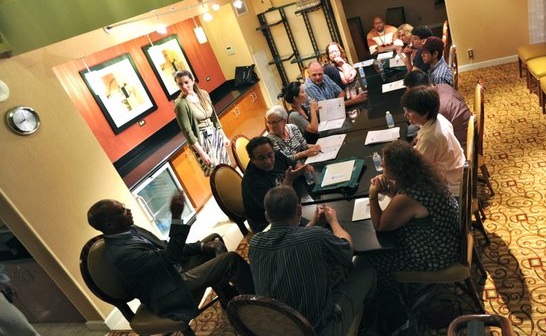
Photo: What's Next California
At last weekend's "What's Next California?" deliberative poll in Torrance, nearly 400 participants discussed and debated the state's initiative process, tax policy, state and local governmance and legislative representation. Part of the Center's California Constiutional Reform project, the weekend-long forum was taped by a public television film crew for an upcoming documentary.
The designer of the process of "deliberative polling," Stanford Professor James Fishkin, gave his thoughts on the event on its last day in a YouTube video, and he will also be speaking about the project at the Commonwealth Club of San Francisco on June 30th.
More news about the deliberative poll can be found on the What's Next California website »
Details on Prof. Fishkin's Upcoming Talk at the Commonwealth Club of California »
"What's Next California" Kicks Off This Weekend
With the California Constitutional Reform project's deliberative poll of over 300 randomly selected citizens set to kick off this weekend, the Stanford News Service has a story about the developer of this innovative methodology, communications professor James Fishkin.
Opinion polls typically ask members of the public how they stand on the issues, whether they know much about the issues or not. That seemed like a flaw in the process to Stanford communication professor James Fishkin, who pondered the question, "Would people have the same response if they took the time to learn about the issues?"
The answer, it turns out, is that many people, once they gain a grasp of the issues, change their minds. In 16 countries, Fishkin has surveyed random samples of ordinary citizens and then brought them together for days-long discussions with each other and with competing experts on the topics.
This weekend, June 24-26, Prof. Fishkin will be at a hotel in Torrance working with researchers from the Center and its partners in the California Constitutional Reform project, who include the Center for Deliberative Democracy at Stanford and NextCA, whose website will provide running coverage of the event through Facebook and Twitter.
PBS NewsHour host Judy Woodruff will moderate the event, and MacNeil-Lehrer Productions will be shooting a documentary program about the project.



